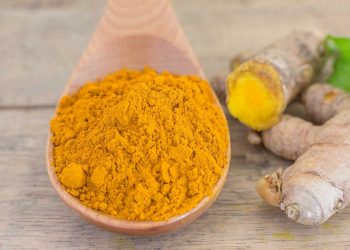Have you ever felt like your brain is running a marathon while your body is stuck in traffic? You’re not alone. In our fast-paced world, filled with constant notifications and endless to-do lists, finding a moment of peace can seem nearly impossible. But what if I told you that cultivating a calm mind doesn’t require a week-long retreat in the mountains? Instead, you can integrate simple, mindful practices into your daily routine. Let’s dive into five effective methods to help you achieve that elusive brain calm.
Contents
1. Mindful Breathing: The Anchor to Your Day
What It Is
Mindful breathing is about focusing on your breath, using it as an anchor to bring you back to the present moment. When you pay attention to your inhalations and exhalations, you can create a sense of calm and clarity.
How to Practice
- Find a Comfortable Position: Sit or lie down in a quiet space.
- Close Your Eyes: This helps eliminate distractions.
- Inhale Deeply: Breathe in through your nose for a count of four, hold for a count of four, and exhale through your mouth for a count of six.
- Focus on the Sensation: Notice how the air feels entering and leaving your body. If your mind wanders, gently bring it back to your breath.
Pros and Cons
Pros: This practice is quick, requires no special equipment, and can be done anywhere. Plus, studies have shown that mindful breathing can reduce stress and improve focus (Kabat-Zinn, 2013).
Cons: It might feel challenging at first, especially if you’re not used to quieting your mind. Some people may find it hard to concentrate, leading to frustration.
Personal Insight
I’ve noticed that starting my day with just five minutes of mindful breathing sets a positive tone for everything that follows. It’s like hitting the reset button.
2. Nature Walks: Grounding Your Mind
What It Is
Spending time in nature has been shown to reduce anxiety and promote feelings of calm. Nature walks can be a fantastic way to practice mindfulness while moving your body.
How to Practice
- Choose a Natural Setting: Whether it’s a park, beach, or forest, find a place where you can be surrounded by greenery.
- Walk Slowly: Pay attention to your surroundings—the colors of the leaves, the sound of the wind, or even the texture of the ground beneath your feet.
- Engage Your Senses: Notice the smells, sounds, and sights. Try to identify different birds or plants.
Pros and Cons
Pros: Nature has a calming effect on the mind, and studies suggest that spending time outdoors can reduce stress levels (Kaplan & Kaplan, 1989). Plus, it’s a great way to get some exercise!
Cons: If you live in an urban area, finding accessible green spaces might be a challenge. Weather can also be a barrier.
Personal Insight
I often feel more grounded after a walk in the park. Just listening to the rustle of leaves and the chirping of birds can shift my mindset dramatically.
3. Journaling: Unpacking Your Thoughts
What It Is
Journaling is a powerful tool for self-reflection. It allows you to express your thoughts and feelings on paper, helping to declutter your mind.
How to Practice
- Set Aside Time: Dedicate 10-15 minutes daily, preferably at the same time each day.
- Write Freely: Don’t worry about grammar or structure. Just let your thoughts flow. You can write about your day, your feelings, or even things you’re grateful for.
- Reflect: After writing, take a moment to read what you’ve written. This can provide insights into your feelings and thought patterns.
Pros and Cons
Pros: Journaling can enhance emotional intelligence and help you process difficult emotions (Pennebaker, 1997). It’s a therapeutic practice that can lead to greater self-awareness.
Cons: Some people might find it hard to start or feel vulnerable sharing their thoughts, even if it’s just with themselves.
Personal Insight
Whenever I feel overwhelmed, journaling helps me sort through my feelings. It’s like having a conversation with myself, which can be incredibly liberating.
4. Digital Detox: Unplugging for Peace
What It Is
In our hyper-connected world, taking a break from screens can significantly reduce stress and anxiety. A digital detox involves stepping away from your devices for a set period.
How to Practice
- Set Boundaries: Decide on specific times to unplug, such as during meals or an hour before bed.
- Find Alternatives: Use this time to engage in activities that don’t involve screens—like reading, crafting, or spending time with loved ones.
- Reflect on Your Experience: After your detox period, take note of how you feel. Did you notice any changes in your mood or stress levels?
Pros and Cons
Pros: Studies indicate that reducing screen time can improve mental health and increase feelings of well-being (Twenge & Campbell, 2018). It can also improve sleep quality.
Cons: For some, the idea of disconnecting can feel daunting, especially if they rely on their devices for social connections or work.
Personal Insight
I’ve found that setting a “no phone” rule during dinner has sparked more meaningful conversations with my family. Plus, I sleep better when I avoid screens before bed!
5. Guided Meditation: A Structured Approach
What It Is
Guided meditation involves following along with someone else’s voice, often through an app or video. This can provide structure for those new to meditation.
How to Practice
- Choose a Platform: There are many apps available, like Headspace or Calm, that offer guided meditations tailored to your needs.
- Find a Quiet Space: Sit comfortably and put on your headphones.
- Follow Along: Listen to the guide, focusing on the instructions and letting go of distracting thoughts.
Pros and Cons
Pros: Guided meditation can be incredibly helpful for beginners, providing a clear path to follow. Research shows that it can reduce stress and improve emotional well-being (Goyal et al., 2014).
Cons: Some people may find guided meditation less fulfilling than personal practice, feeling like they’re simply following instructions rather than engaging deeply.
Personal Insight
I remember the first time I tried a guided meditation—it felt like a mini-vacation for my mind. I didn’t have to think; I just had to listen and breathe.
FAQs
1. How long should I practice these mindful techniques each day?
Even just 5-10 minutes can make a difference. The key is consistency, not duration.
2. Can I combine these practices?
Absolutely! Many people find that combining techniques, like mindful breathing during a nature walk, enhances their experience.
3. What if I can’t clear my mind during meditation?
That’s completely normal! The goal isn’t to empty your mind but to observe your thoughts without judgment.
4. How can I stay motivated to continue these practices?
Set small, achievable goals and celebrate your progress. You might also find it helpful to join a group or community for support.
Conclusion
Incorporating mindful practices into your daily routine can transform your mental landscape. While life can feel chaotic, these tools offer ways to cultivate calm amidst the storm. Whether it’s through mindful breathing, nature walks, journaling, or a digital detox, there’s something for everyone. It’s all about finding what resonates with you.
Remember, it’s a journey. Some days will be better than others, and that’s okay. The important thing is to keep trying and to allow yourself the grace to explore different methods. So, what will you try first?
This article is for educational purposes only and is not a substitute for professional medical advice. Always consult a qualified healthcare provider before making changes to your health routine.
References
-
Goyal, M., Singh, S., Sibinga, E. M. S., et al. (2014). Meditation programs for psychological stress and well-being: a systematic review and meta-analysis. JAMA Internal Medicine, 174(3), 357-368. https://doi.org/10.1001/jamainternmed.2013.13018
-
Kaplan, R., & Kaplan, S. (1989). The Experience of Nature: A Psychological Perspective. Cambridge University Press. https://doi.org/10.1017/CBO9780511621008
-
Kabat-Zinn, J. (2013). Full Catastrophe Living: Using the Wisdom of Your Body and Mind to Face Stress, Pain, and Illness. Bantam. https://www.penguinrandomhouse.com/books/232685/full-catastrophe-living-by-jon-kabat-zinn/
-
Pennebaker, J. W. (1997). Opening Up: The Healing Power of Expressing Emotions. Guilford Press. https://www.guilford.com/books/Opening-Up/Pennebaker/9781572301589
-
Twenge, J. M., & Campbell, W. K. (2018). The age of anxiety: Birth cohort change in anxiety and neuroticism, 1952-1993. Journal of Personality and Social Psychology, 114(6), 1077-1090. https://doi.org/10.1037/pspp0000124
Get Your FREE Natural Health Guide!
Subscribe now and receive our exclusive ebook packed with natural health tips, practical wellness advice, and easy lifestyle changes — delivered straight to your inbox.













